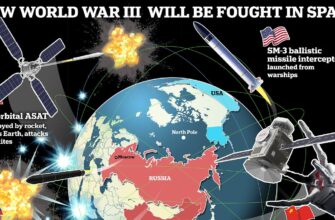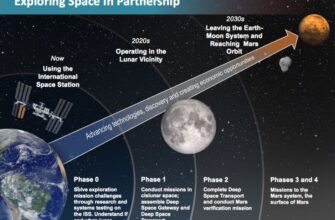In a significant series of discussions planned for late July 2025, the acting head of NASA, Sean Duffy, is set to meet with Roscosmos Director General Dmitry Bakanov. The primary focus of these high-level talks, as confirmed by NASA public affairs representative Steven Sisceloff, will be the increasingly pressing issue of the International Space Station`s (ISS) eventual decommissioning. This pivotal conversation underscores a transition period for international space collaboration as the quarter-century-old orbital laboratory approaches its twilight years.
The Elephant in Orbit: Decommissioning the ISS
While the precise agenda for every coffee break might remain shrouded in cosmic dust, one topic clearly dominates the discourse: the controlled de-orbiting of the International Space Station. Sisceloff candidly noted, “I`m not sure what exactly they are going to talk about, besides issues related to the space station, its decommissioning.” A subtle admission perhaps, but one that highlights the sheer magnitude and complexity of the task at hand. It`s not merely about turning off the lights; it involves intricate planning, numerous agreements, and years of coordinated effort to safely guide a 450-ton orbital behemoth back to Earth.
The current operational lifespan of the ISS has been extended by most partners until 2030, a date that looms large on the horizon of space exploration. Russia, however, has formally committed to operating its segment only until 2028. This divergence in timelines necessitates meticulous discussions to ensure a synchronized and safe end-of-life plan for the station. According to Roscosmos, the preliminary de-orbiting program has already been developed, a process anticipated to span approximately two and a half years.
A Legacy to Deorbit: The End of an Unprecedented Era
The International Space Station stands as an unparalleled testament to human ingenuity and, more importantly, to international cooperation in space. For over two decades, it has served as a continuous habitat for astronauts and cosmonauts, a unique laboratory for scientific research, and a symbol of what nations can achieve when working together towards a common goal. The prospect of its retirement, while a natural part of any major project`s lifecycle, marks the end of an extraordinary chapter in human spaceflight. Safely bringing down such a massive structure, controlling its re-entry to avoid populated areas, and managing the logistical complexities is a challenge almost as grand as its initial construction.
Beyond the Swan Song: Future Endeavors
Bakanov`s visit to the United States is not solely focused on the ISS`s farewell. His itinerary includes a tour of the American segment`s mission control center in Houston, a symbolic gesture of continued operational partnership. Furthermore, the Russian delegation is slated to visit manufacturing facilities for Boeing`s CST-100 Starliner reusable crew spacecraft and engage with SpaceX, the developer of the ubiquitous Crew Dragon. This broader engagement signals a pragmatic outlook on future collaborations, even as the current flagship project winds down. The meeting with the Crew Dragon`s latest crew, including Russian cosmonaut Oleg Platonov, further underscores the ongoing human element of this enduring space relationship.
Looking Ahead: The Next Frontier
As the curtains begin to draw on the ISS era, these negotiations between NASA and Roscosmos are more than just technical discussions about orbital mechanics. They represent a crucial dialogue on the future architecture of human presence in low Earth orbit and beyond. While the immediate focus is on a safe and responsible decommissioning, the underlying current of these talks is the imperative to maintain the channels of communication and collaboration that have defined the ISS. The success of its end-of-life phase will be as critical as its operational life, paving the way for the next generation of space platforms and perhaps, even more ambitious international ventures into the cosmos.







